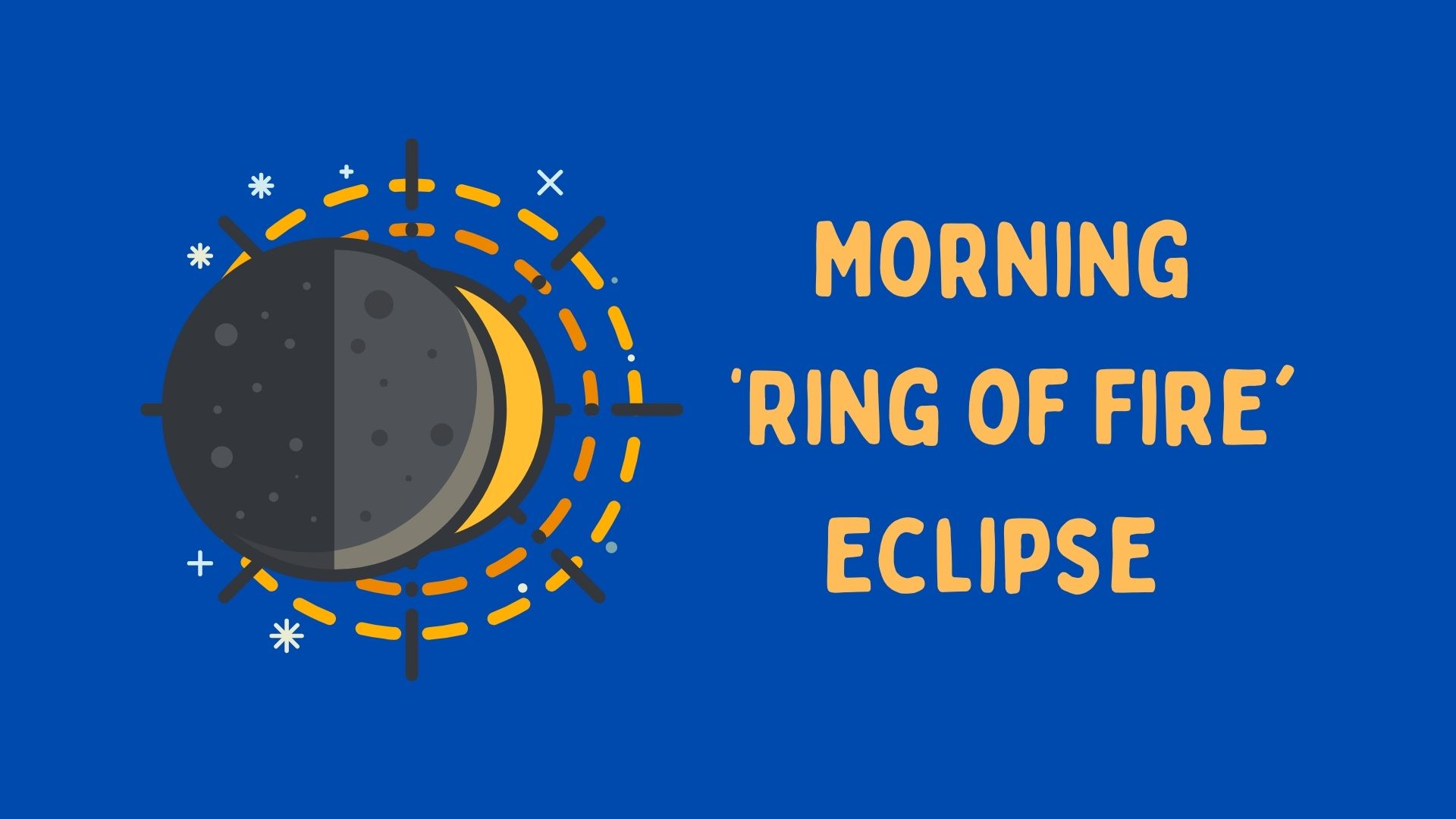On Saturday, Oct. 14th an annular solar eclipse will come to North America. A solar eclipse occurs when the Moon passes between Earth and the Sun, obscuring the view of the Sun from a small part of the Earth, either totally or partially
This one will be visible from a region crossing eight U.S. states from Oregon to Texas, according to NASA. An annular solar eclipse happens when the moon appears relatively small in the sky, so it does not fully cover the disk of the sun, leaving a thin outer ring often called a “ring of fire.” NASA doesn’t expect the next such event until 2039.
Whether the moon can completely cover the sun’s disk depends on the moon’s distance from Earth. The moon has a slightly elliptical orbit around Earth, so at two points each month, it is farthest (apogee) and closest (perigee) to Earth, making the moon appear slightly smaller and slightly larger than average in our sky.
All of North America, Central America, and most of South America will experience this solar eclipse. For that region, the spectacle will be a partial solar eclipse of varying obscuration. Only within the path of annularity, which is 118 to 137 miles wide, will the actual ring of fire be visible. That path will stretch from Oregon through northern California, northeast Nevada, central Utah, northeast Arizona, southwest Colorado, central New Mexico and southern Texas. It will then move across the Gulf of Mexico and over Mexico, Guatemala, Belize, Honduras, Nicaragua, Costa Rica, Panama, Colombia and Brazil.
Since it won’t be visible in our part of the country, your best chance to see this Ring of Fire may be to watch the eclipse on the NASA live stream. If you want to see the eclipse in person, the most scenic places are in the U.S. Southwest and at the Mayan temple at Edzná on Mexico’s Yucatán Peninsula. Here are some notable locations and cities that will see a ring of fire, together with the local time and duration of that event. Their closeness to the centerline of the path of annularity determines the duration of the ring of fire:
Oregon Dunes, Oregon: 9:15 a.m. PDT; 4 minutes, 29 seconds
Crater Lake National Park, Oregon: 9:17 a.m. PDT; 4 minutes, 19 seconds
Lava Beds National Monument, California: 9:19 a.m. PDT; 54 seconds
Great Basin National Park, Nevada: 9:24 a.m. PDT; 3 minutes, 46 seconds
Bryce Canyon National Park, Utah: 10:27 a.m. MDT; 2 minutes, 31 seconds
Capitol Reef National Park, Utah: 10:27 a.m. MDT; 4 minutes, 37 seconds
Canyonlands National Park, Utah: 10:29 a.m. MDT; 2 minutes, 24 seconds
Natural Bridges National Monument, Utah: 10:29 a.m. MDT; 4 minutes, 29 seconds
Mesa Verde National Park, Colorado: 10:31 a.m. MDT; 2 minutes, 57 seconds
Chaco Culture National Park, New Mexico: 10:32 a.m. MDT; 4 minutes, 42 seconds
Albuquerque, New Mexico: 10:34 a.m. MDT; 4 minutes, 42 seconds
San Antonio: 11:52 a.m. CDT; 4 minutes, 5 seconds
Corpus Christi, Texas: 11:55 a.m. CDT; 4 minutes, 52 seconds
Padre Island National Seashore, Texas: 11:56 a.m. CDT; 4 minutes, 52 seconds
Edzná Maya archaeological site, Yucatán Peninsula, Mexico: 11:23 a.m. CST; 4 minutes, 32 seconds.
Although it’s a great excuse to visit new places, the most important factor for eclipse viewing is clear weather. Check the climate and weather before you make any plans and be prepared to change your location when the local short-term weather forecasts arrive.

